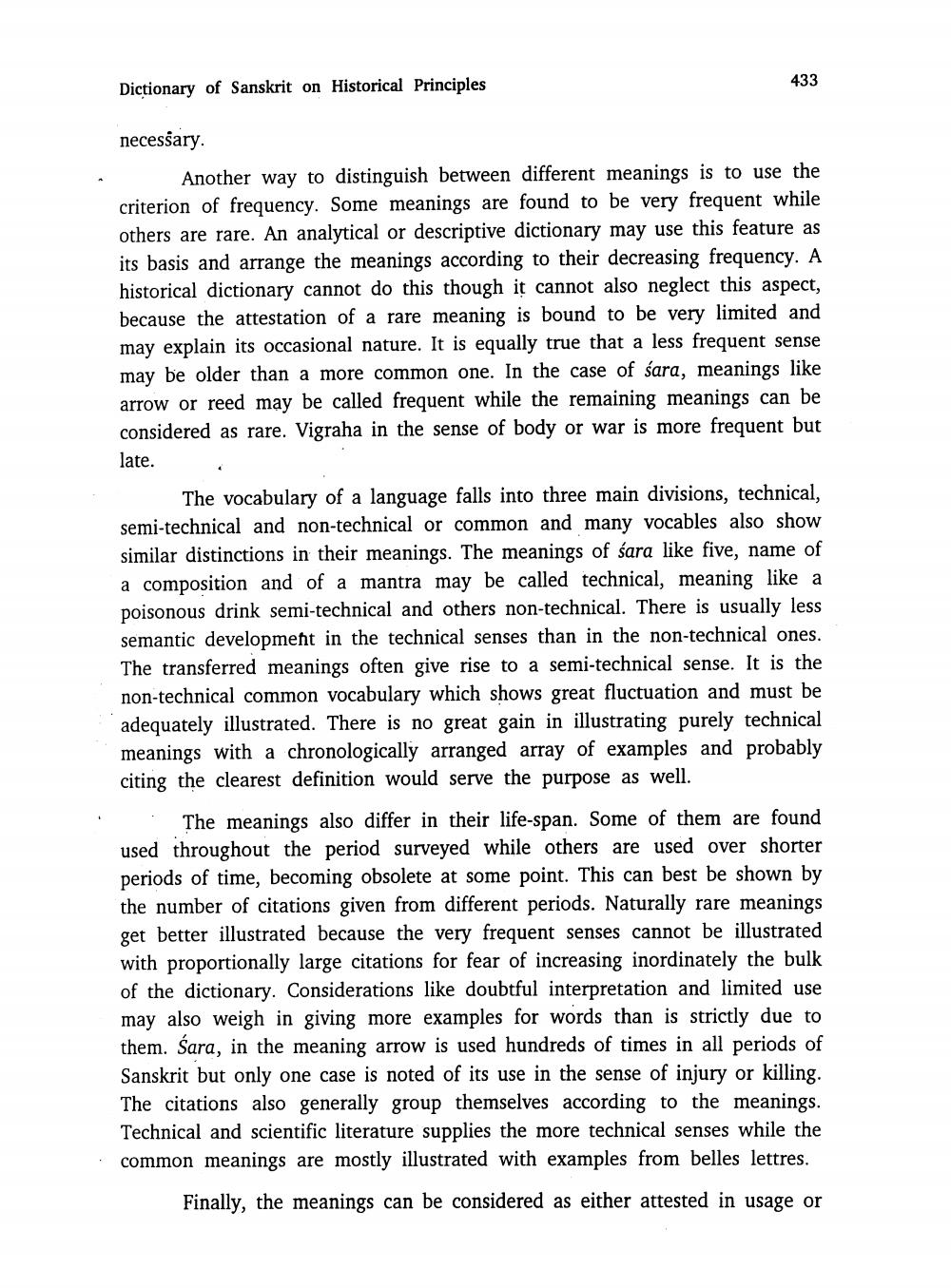________________
Dictionary of Sanskrit on Historical Principles
433
necessary
Another way to distinguish between different meanings is to use the criterion of frequency. Some meanings are found to be very frequent while others are rare. An analytical or descriptive dictionary may use this feature as its basis and arrange the meanings according to their decreasing frequency. A historical dictionary cannot do this though it cannot also neglect this aspect, because the attestation of a rare meaning is bound to be very limited and may explain its occasional nature. It is equally true that a less frequent sense may be older than a more common one. In the case of śara, meanings like arrow or reed may be called frequent while the remaining meanings can be considered as rare. Vigraha in the sense of body or war is more frequent but late.
The vocabulary of a language falls into three main divisions, technical, semi-technical and non-technical or common and many vocables also show similar distinctions in their meanings. The meanings of śara like five, name of a composition and of a mantra may be called technical, meaning like a poisonous drink semi-technical and others non-technical. There is usually less semantic development in the technical senses than in the non-technical ones. The transferred meanings often give rise to a semi-technical sense. It is the non-technical common vocabulary which shows great fluctuation and must be adequately illustrated. There is no great gain in illustrating purely technical meanings with a chronologically arranged array of examples and probably citing the clearest definition would serve the purpose as well.
. The meanings also differ in their life-span. Some of them are found used throughout the period surveyed while others are used over shorter periods of time, becoming obsolete at some point. This can best be shown by the number of citations given from different periods. Naturally rare meanings get better illustrated because the very frequent senses cannot be illustrated with proportionally large citations for fear of increasing inordinately the bulk of the dictionary. Considerations like doubtful interpretation and limited use may also weigh in giving more examples for words than is strictly due to them. Śara, in the meaning arrow is used hundreds of times in all periods of Sanskrit but only one case is noted of its use in the sense of injury or killing. The citations also generally group themselves according to the meanings. Technical and scientific literature supplies the more technical senses while the common meanings are mostly illustrated with examples from belles lettres.
Finally, the meanings can be considered as either attested in usage or




